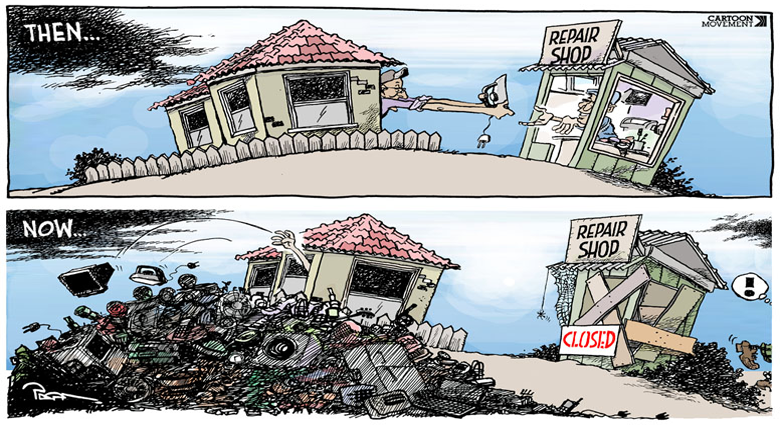You are alive today. You were alive yesterday. You were alive the day before that.
This is good news from a survival perspective. Unfortunately it is bad news from an innovation perspective.
"Work with people who are not like you."
Your brain is wired to keep you alive.
Your brain makes the assumption that because you were alive yesterday, what you did previously is safe. Therefore repeating the past is good for survival.
As a result, doing things differently, even if it seems like an improvement, is risky. Perpetuating past behaviors, from the brain’s reptilian perspective, is the safest way.
This is why innovation is difficult for most individuals and organizations.
Innovation is about change. It is about doing something different than you did previously. It is about trying something that you have not done before, and therefore may feel dangerous to your survival.
How does this survival brain prevent innovation – and what can you do about it? Here are seven ways to outsmart your brain.
Challenge #1- The Brain Wants Pains Solved First: The brain is wired to minimize loss. We want to keep what we already have. Equally, we are not interested in something new, until we address our pains. The brain seeks preservation over pleasure. We want our pains solved before we are interested in gains.
Solution : If you wish to be effective with others, recognize that people want their pains solved more than anything else. Therefore be the aspirin for their pains Innovation is not just about creating something new and different. It should solve a problem that people have. Infomercials are effective at demonstrating this. Every one of their commercials shows why past solutions have not worked and how their product solves a common consumer pain.
Challenge #2 - Expertise is the Enemy of Innovation: We build neural pathways to known solutions. What we know best (or in some cases have heard most recently) becomes our default answer. Unfortunately, once we find an answer to a problem, we stop looking for other possible solutions. As a result, the tried and true wins out and we get more of the same.
Solution: 1) Keep looking. Although this sounds simple, don’t stop with the obvious answers. Keep pushing until you are out of ideas and then still push forward. 2) Look to others who have solved a similar problem in a different arena. Ask “Who else has solved a problem like this?” A whitening toothpaste was developed by studying how laundry detergent whitens clothes. A medical device manufacturer learned how angioplasty balloons expand and contract by studying car airbag deployment.
Challenge #3 - The Brain Wants Solutions, Not Problems: In the world of business, we hear the expression, “Don’t bring me problems, bring me solutions.” From a survival perspective this makes sense. When faced with the possibility of being eaten by a lion, we don’t want to study our navel. Action is critical. However in the world of innovation, the “problem” is actually more important.
Solution: Ask better questions. Einstein reputedly said, “If I had an hour to save the world, I would spend 59 minutes defining the problem and one minute finding solutions.” Asking the right question the right way is critical. This focuses everyone on what is important and helps provide useful constraints that accelerate the innovation process. Instead of asking for broad ideas such as how to increase revenues, first identify the specific growth opportunities, untapped markets, emerging trends, and current roadblocks. Then find solutions to those more focused challenges.
Challenge #4 - The Brain Craves Commonality: Contrary to conventional wisdom, opposites do not attract. It is safer to be in a tribe of people who think the same way. Things get done quickly. It feels effortless. But the downside is that it thwarts innovation.
Solution: Work with people who are not like you. Find people with different backgrounds, personality styles, and interests. Appreciate their contribution to you and your professional efforts. For example, I am someone who is disorganized and despises plans or planning. As a result, the first person I bring on to my team is a detail-oriented project manager who can make sure ensure that I get everything done.
Challenge #5 - The Brain Sees What It Believes: The brain uses a pattern matching technique called “confirmation bias.” In a nutshell, it rejects anything that is inconsistent with your belief structure. This is why two people can listen to the same political candidate and hear completely different things. From an innovation perspective, this may have us get attached to certain ideas, despite evidence proving that they are probably duds.
Solution: Avoid getting wed to your ideas by getting someone to play devil’s advocate. Any time you think to yourself, “Wow, this is a great idea,” get someone to poke holes in your logic. Don’t go to the same people for input. Seek out people who you suspect would reject the idea. Learn from them. Refine your solution based on numerous perspectives, not just your own biases.
Challenge #6 – Your Brain Only Sees a Fraction of Reality: What you focus on expands, to the exclusion of everything else. The brain’s reticular activating system is designed to filter out 99.99% of the stimuli out there. This prevents the brain from being overwhelmed by information. Unfortunately, as a result, you miss out on opportunities because you cannot even see they are there. When you have a hammer, the entire world is a nail. When you are a technology expert, the solution to every problem involves software/hardware. Opportunities are limited to your frame of reference.
Solution: Sometimes you need to purposefully retrain the brain. To expand your view, try new things. Attend conferences unrelated to your work. Read magazines from different industries. This is why I don’t read books on innovation, but instead read about neuroscience, psychology, and sports performance. This helps me see more of the world. And this allows you to find opportunities in places you might not otherwise look.
Challenge #7 – The Brain Thinks Too Much : The dorsolateral prefrontal cortex is the judgmental part of the brain. It is analytical and calculating. This is great for decision-making that requires logic. But it can kill innovation. When athletes choke, they are over thinking and constrict the neural pathways that allow access to their deeper capabilities.
Solution: Quiet that part of the brain through meditation, yoga, showering, or any other relaxing activity. This allows you to gain access to the creative parts of your brain. Aristotle found his greatest breakthroughs while napping. When stressed and in traditional work-mode, it is harder to access your natural, creative abilities. One company found that they could speed up the development of new product ideas through meditation first thing in the morning.
The brain is incredibly powerful. And it does its job exceptionally well: perpetuate the species. It does this by ensuring the survival of the individual and the gene pool. Although this is of course valuable (if you were dead, you could not innovate) it does limit our ability to try new things. Perpetuating the past is the surest way to survive. But for organizations, doing what you did in the past is the fastest path to extinction. By knowing how your brain is wired, you can choose to both survive and thrive.




.png)


%20(1).png)

What Did You Think?